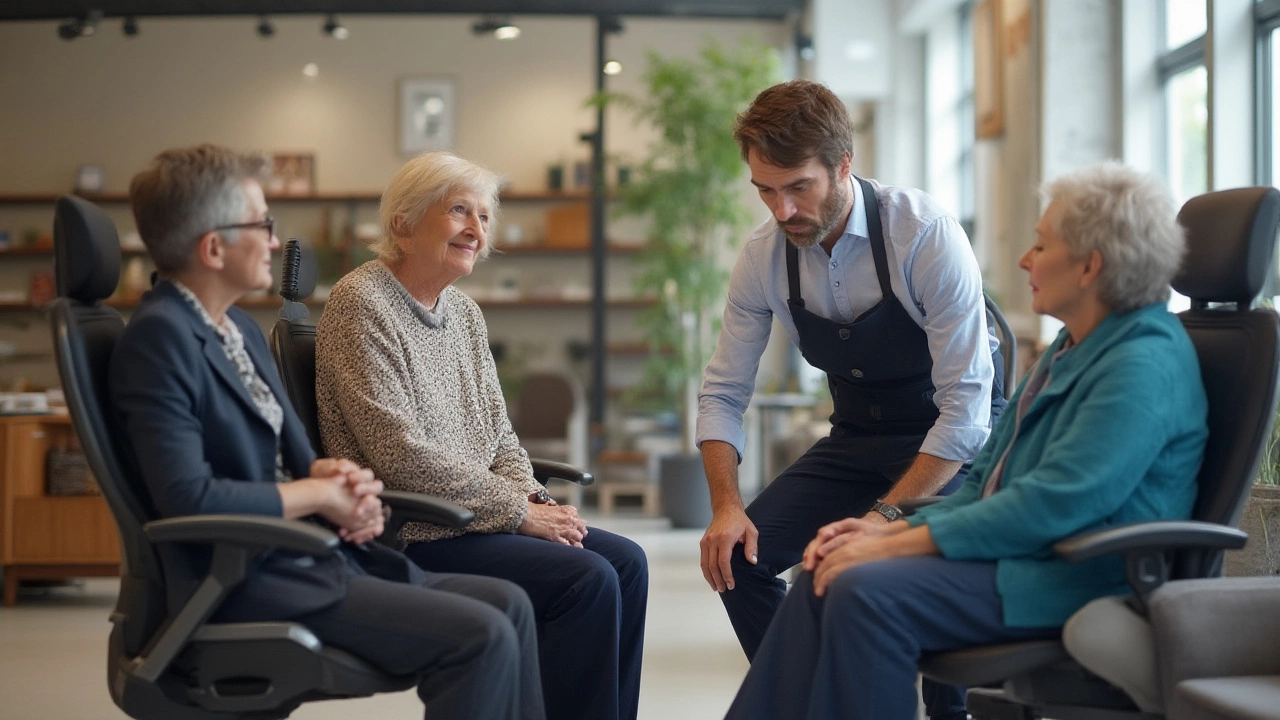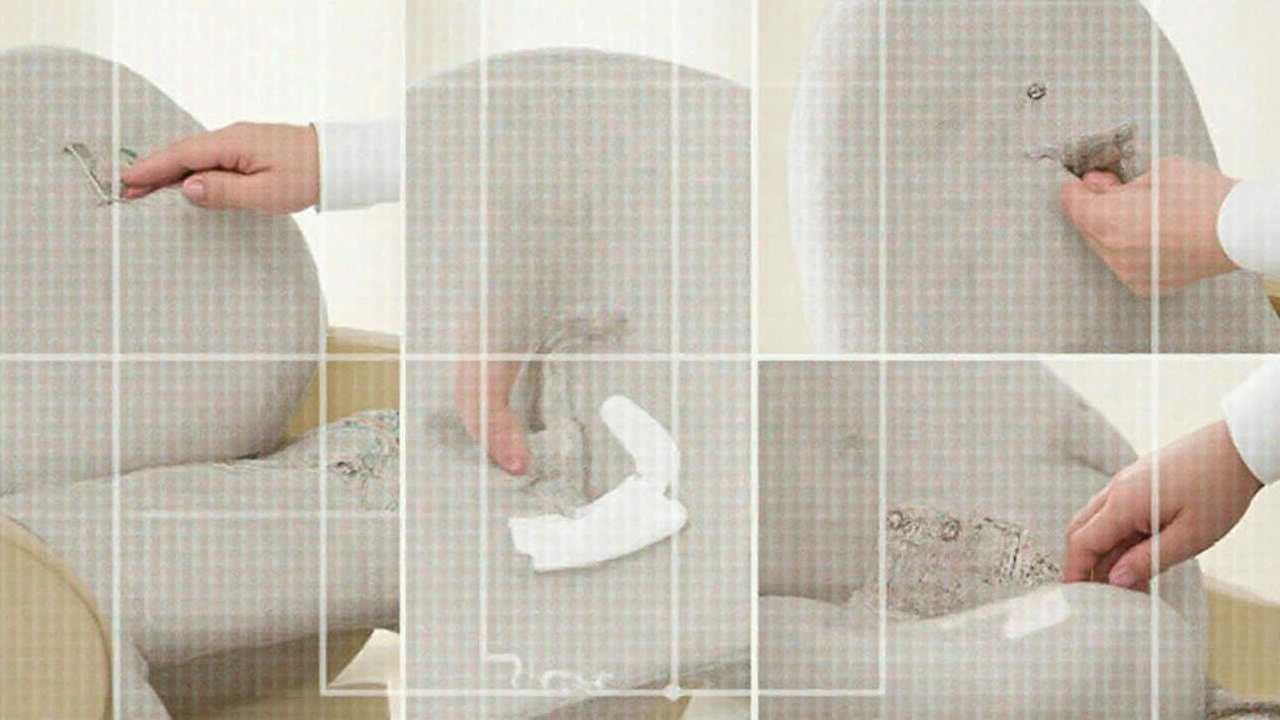Ever notice how a bad chair can mess up your whole day? If you’re past 60, you probably feel it in your back, hips, or even your knees after sitting a while. Chairs might seem basic, but picking the wrong one gets rougher as we age. Many older folks end up swapping out their living room chairs after a few years just because their joints or backs can’t handle the old favorite anymore. No surprise—over 70% of adults over 65 deal with some sort of joint pain or back trouble, according to studies by the CDC. The secret sauce? Choosing a chair built for support and comfort, not just style.
What Makes a Chair Senior-Friendly?
You can spot a senior-friendly chair from a mile away—it's not about lace doilies or floral prints, but about what the chair actually does for your body. Let’s break it down in simple terms. First off: seat height. Getting up from a low chair can feel like an Olympic sport if your knees ache, so a seat height of around 18 to 20 inches from the floor gives most older adults the right leverage. Next up, armrests—they aren't just for show. Wide, sturdy armrests make it so much easier to stand up or sit down without straining your shoulders or wrists. Go for ones that don’t wobble or dig into your arms.
Support is the next big deal. Saggy chairs might look cozy, but they’re tough on your back and can make it super hard to get up, especially if your muscles aren’t what they used to be. Look for chairs with firmer cushions, ideally with memory foam or high-resilience foam inside. Your lower back—the lumbar area—takes a lot of pressure, so chairs with good lumbar support can help fend off that dull, nagging backache that seems to come out of nowhere.
Here’s a fact that surprises a lot of people: chairs with adjustable features can make a massive difference. Think adjustable recliners, or seats where you can change the tilt or height. If you’re shopping for a long-lasting chair, test out the recline. Does it feel stable? Do the mechanisms move smoothly? Don’t forget the upholstery, either. Leather or wipeable fabrics are easier for spills (and accidents, let’s be real), but breathable, soft fabrics keep you cooler and can feel nicer over hours of sitting.
Consider weight limits too. Standard chairs can handle around 250 pounds, but heavy-duty versions support up to 500 pounds. You don’t want to worry about a chair creaking or tipping over, so always check those specs. Safety features like anti-tip legs, locking wheels, or even chairs with integrated lifts can provide more independence and prevent falls—something none of us want to risk.
It’s not just about the living room, either. Kitchen or dining chairs should also be easy to get in and out of, with supportive backs and safe finishes. If you have trouble gripping, padded armrests or textured surfaces prevent slips. Lastly, don’t be shy about choosing a bright color or bold pattern. Not only do these cheer up a room, but high-contrast colors help seniors with fading eyesight easily spot where the chair is in the room.

Top Types of Senior Chairs and Their Real Benefits
When people talk about the “best chair for old age,” the conversation usually lands on recliner chairs, lift chairs, and orthopedic chairs. Each has its own fans and a list of pros you’ll spot right away.
Let’s start with recliners—they aren’t just for naps anymore. The best modern recliners come with powered controls, sturdy lift assist, massage functions, even built-in USB ports for charging gadgets. In fact, electric lift chairs are a huge game-changer. These gently tilt forward and up, almost gliding you to a standing position—no pushing on wobbly knees. According to a 2022 survey by the American Geriatrics Society, over 45% of seniors who switched to lift chairs felt more confident sitting and standing up independently. The right model will let you pause at any position, so if you want to be halfway reclined for reading or watching TV, no problem.
Then there are orthopedic or ergonomic chairs, built with higher backs, strong lumbar support, and seats that don’t sag. Doctors often recommend these after surgery or for anyone dealing with chronic pain. Memory foam cushions mold to your body, spreading your weight out evenly, which helps cut down on pressure sores—a common risk for those who sit most of the day. If you’re shopping for a desk or dining chair, these are a safe bet, especially if you want to encourage good posture and avoid the “hunched-forward” look.
Believe it or not, rocking chairs and gliders are still favorites for a lot of seniors. The gentle movement relaxes the nervous system and can actually help with restless legs, according to Harvard’s Sleep Medicine Department. If you struggle to sleep or just need a calming seat for the afternoon, a rocker with a firm but padded seat can do wonders.
Here’s something practical—chairs with wheels. These are your friends in small spaces or for moving between the kitchen and living room, but only if they come with reliable brakes. Pro tip: Look for models with larger wheels as they roll easier on thick carpet or hardwood.
For those in need of major mobility help, power chairs and wheelchairs with supportive cushioning are options, though these fall into more of the “medical equipment” category. But this doesn’t mean you have to settle for ugly designs; tons of new styles let you customize fabrics and colors, making them feel like a natural part of your home.
- Best chair for old age: Electric lift recliner (with memory foam and lumbar support)
- Runner-up: Orthopedic armchair
- Best for small spaces: Sturdy dining chair with arms
- Easiest for transfers: Mobile chair with locking wheels
- Most calming: Rocking or glider chair with ergonomic padding

Buying Tips and Small Details That Make a Big Impact
When it comes to picking the perfect chair for old age, a bunch of small decisions make a world of difference. Start with measurements—take a minute to grab a tape measure and check your current best chair. Seat depth should let your feet rest flat on the floor with your back touching the backrest. Too deep and you’ll have to scoot or slouch. For most seniors, a seat depth around 18 to 22 inches hits that sweet spot.
Test the armrest height. Armrests at around 7 to 9 inches above the seat fit most adults, allowing your arms to rest naturally without shrugging your shoulders. If you have limited space, look at wall-hugger recliners—they extend outward without taking up much room behind them.
Go with breathable, hypoallergenic upholstery if you have allergies or sensitive skin. Microfiber resists stains. Removable covers make it easier to keep things clean, and machine-washable covers are a real blessing if you want to avoid extra cleaning stress.
Here’s something most folks forget: how heavy the chair is. If you move chairs around a lot, you’ll want something light enough to shift but sturdy enough to stay put when you sit. Timber and metal frames last longer than cheap particleboard. If cost is a concern, check out gently used options from local senior centers or furniture consignment shops—a well-built chair can outlast even the toughest years.
Ask about warranties, especially on powered chairs. Good brands offer one to three years on mechanisms. Don’t underestimate the value of a trial period; sitting in a chair for five minutes at the shop isn’t the same as a Netflix binge at home. Reputable stores allow a “test drive” at home, so you can make sure the seat, back, and arms fit your daily routine.
Place chairs in well-lit areas to make them easier to spot at night. Some come with safety lights you can switch on with your phone or a touch panel—handy if you get up during the night. If falls are a worry, grab some non-slip floor pads to keep the chair from sliding out underneath you.
Finally, talk to the actual user. It’s easy for friends or family to pick a chair that looks good in their style, but comfort is so personal—ask about aches, preferences, and quirks before you shop. Listen for complaints about seats being too hard, too deep, too slippery.
To sum up like a buddy would: Don’t settle for a chair just because it’s cheap or trendy. Your comfort, safety, and independence matter most. The best chair for old age is the one that feels made for your body—giving you support every day, whether you’re reading, napping, or just hanging out. Start with the essentials—solid support, comfy armrests, and an easy-to-clean cover—and you’ll land on a winner.


Write a comment